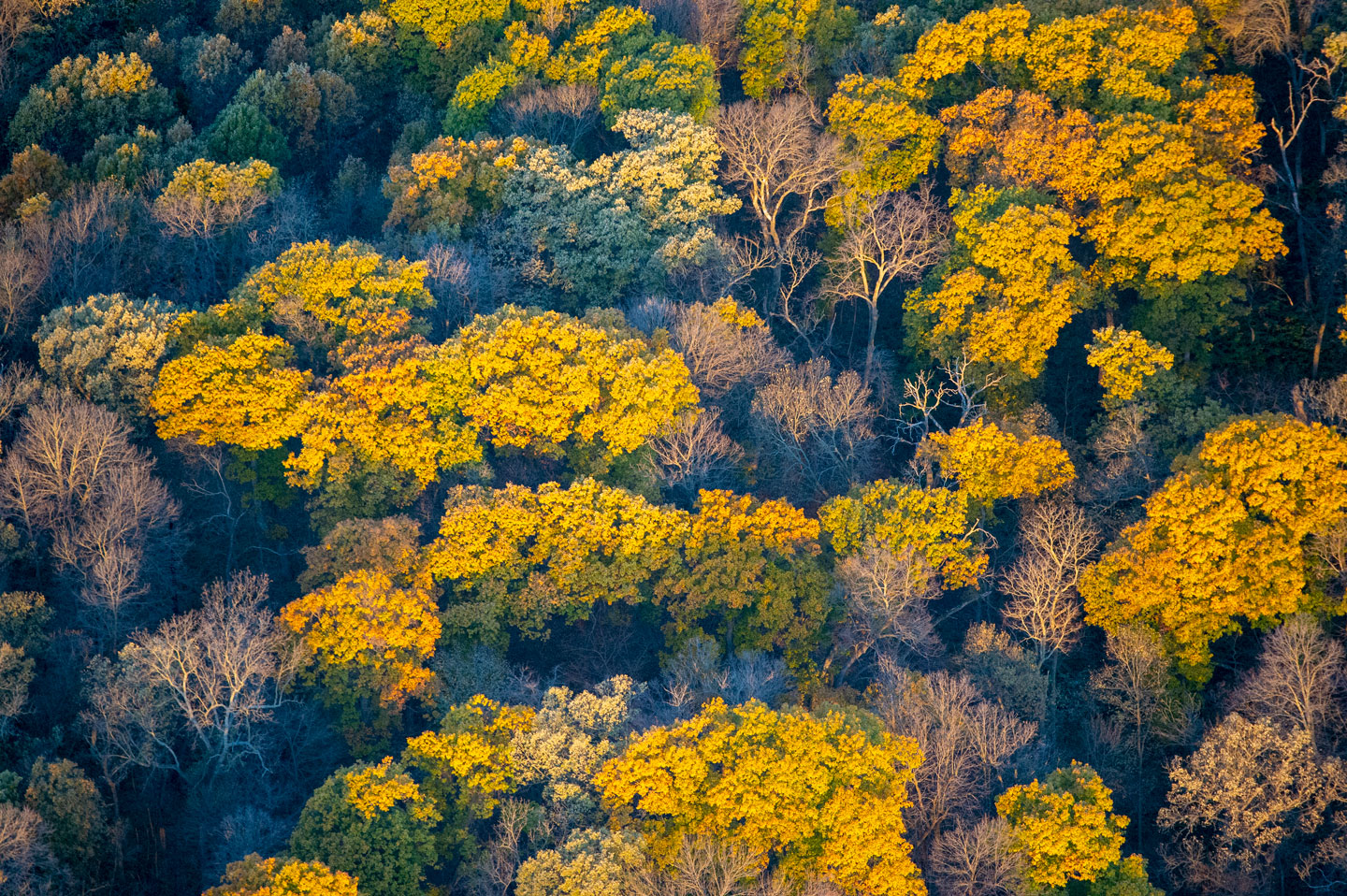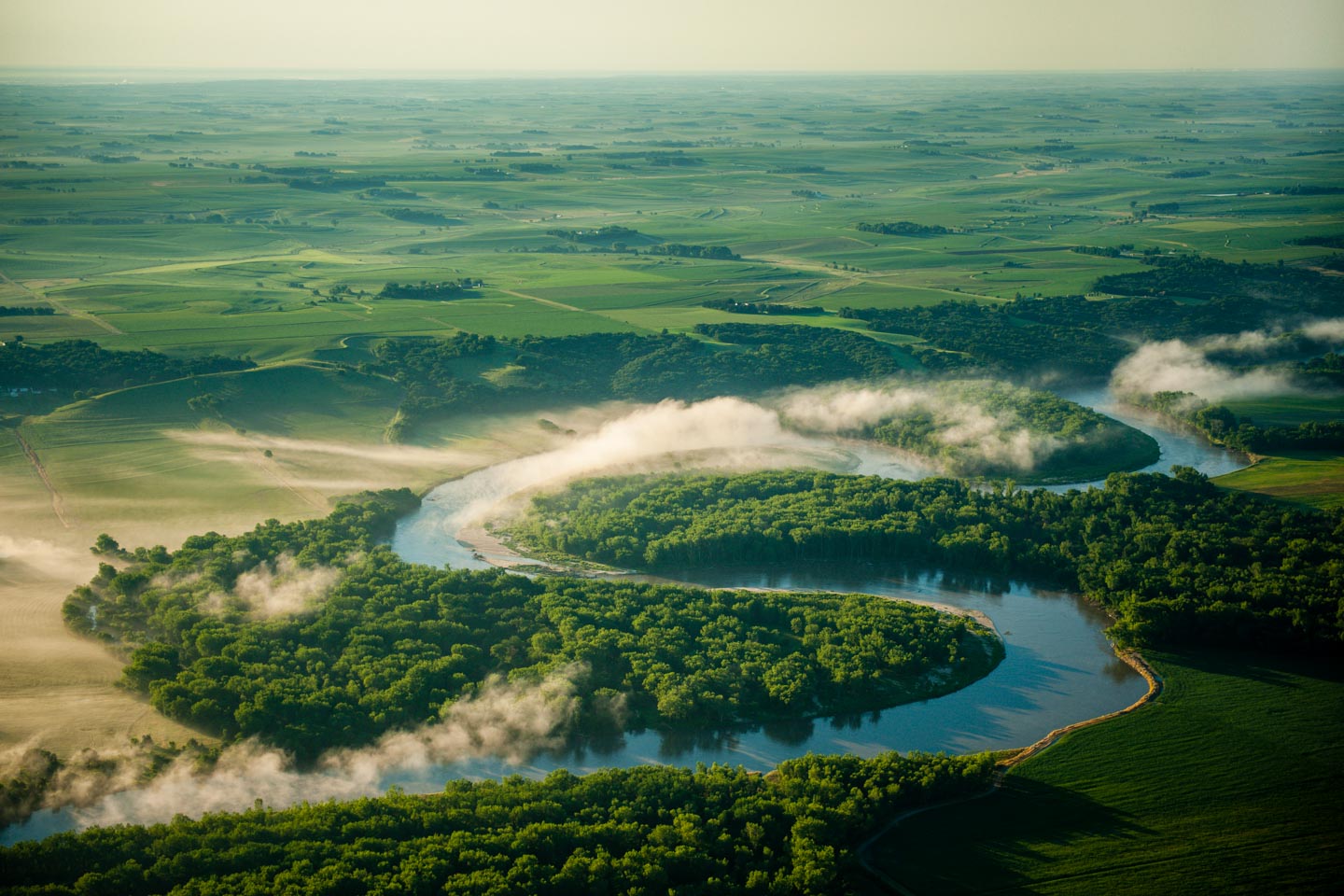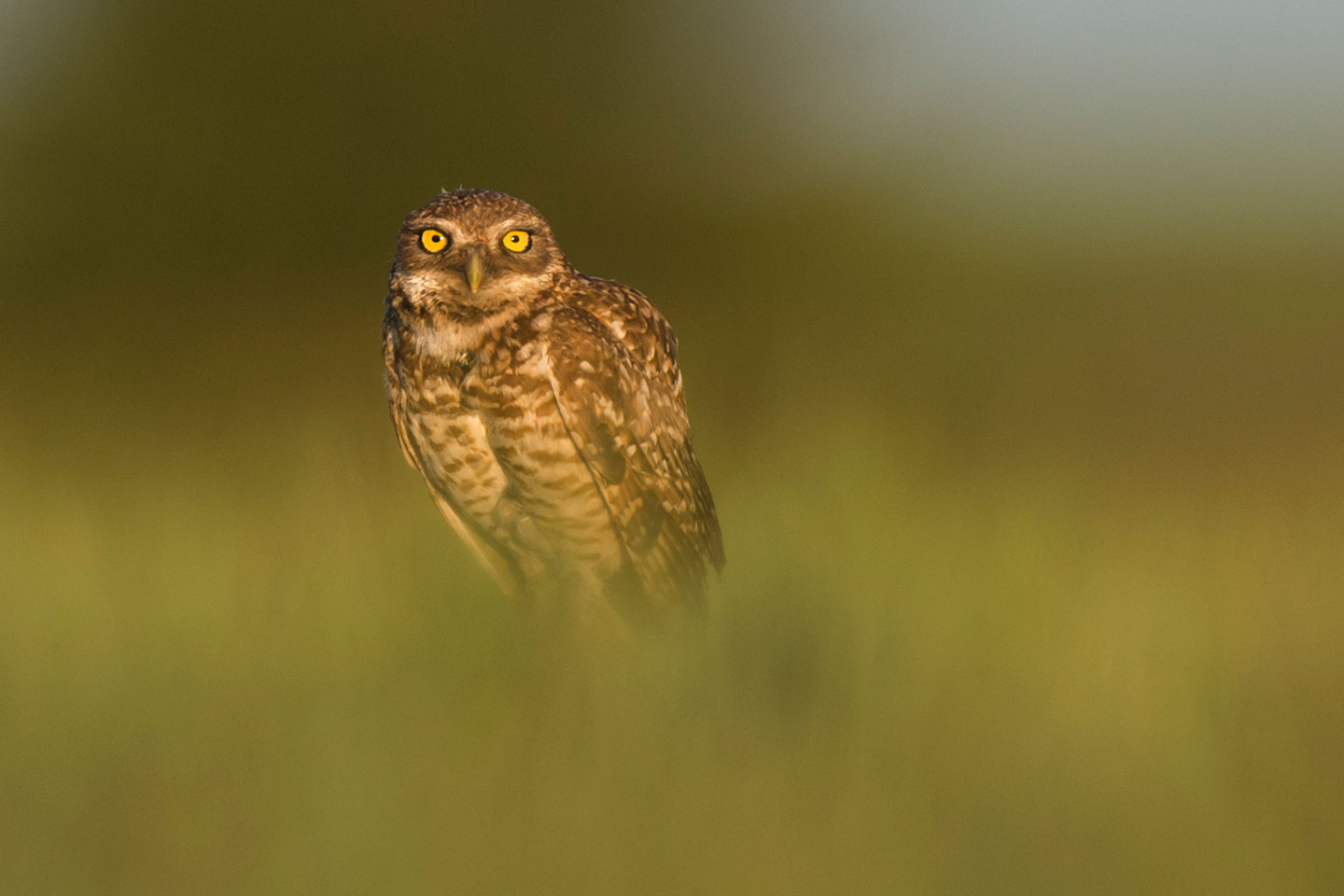Nebraska prairies
Nebraska is a true prairie state with four types of grasslands: tallgrass, shortgrass, mixed grass and Sandhills.
Located in the middle of the Great Plains with large expanses of open grasslands, Nebraska is a true prairie state. Prairie landscapes are defined by moderate temperatures, moderate rainfall and few trees. Prairies and grasslands are also some of the most endangered ecosystems on earth. Scientists believe nearly 80% of prairies are now gone. These biomes have just as much, if not more, biological diversity as the rainforest or the coral reefs. However, much of this biodiversity can be found below the ground in the soil.
Prairies are formed and dependent on the amount of rainfall they receive. During the early years of prairie formation, the growth of the Rocky Mountains blocked significant amounts of rainfall on the eastern side. This created the rain-shadow effect. With minimal rainfall this prevented trees from growing and created instead a grassland, or prairie ecosystem.
From west to east in Nebraska, the landscape changes depending on the type of prairie one would encounter. These differing landscapes and prairies are known as ecoregions. Nebraska has four distinct ecological regions, each having a unique set of landscapes, animals, plants, climate and outdoor recreational activities.
Tallgrass prairie
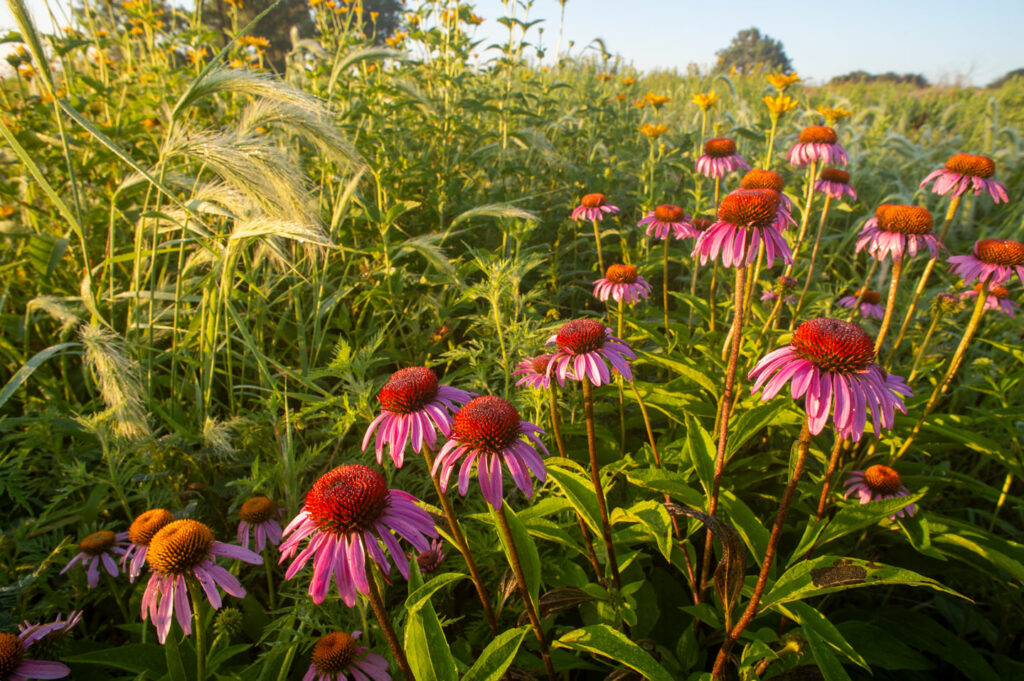
Early explorers described the tall-grass region as a sea of grass with open horizons and abundant wildflowers rooted in rich soils. In Nebraska, the Tallgrass Prairie Ecoregion covers the eastern fourth of the state and receives around 25-36 inches of annual precipitation. This is more than any other ecoregion in the state. The ecoregion contains stretches of two of Nebraska’s major rivers the Missouri River and the Platte River.
Though historically upland tallgrass prairie was the dominant plant community in the region, eastern Nebraska has a diversity of other types ranging from deciduous woodlands to saline wetlands. Upland tallgrass prairie is dominated by big bluestem, Indian grass, switchgrass, and Canada wild-rye. Tallgrass prairies also include hundreds of species of wildflowers and other forbs. Native woodlands also are found extensively along the Missouri River Valley, which includes species such as Cottonwoods, willows, boxelders, and American elms. These woodland habitats provide essential habitat for migrating birds.
More than 300 species of resident and migratory birds have been documented in the Tallgrass Prairie Ecoregion. This region supports populations of greater prairie-chicken, Henslow’s sparrow, dickcissel, bobolinks and Swainson’s Hawks. Along with birds more than 55 mammal species have been recorded including prairie voles, Franklin’s ground squirrels, red foxes, southern flying squirrels and long-tailed weasels.
Streams, rivers, and lakes in the Tallgrass Prairie Ecoregion are home to nearly 75 species of fish. Among these are the channel catfish, flathead chub and bluegill. Fifty-three species of amphibians and reptiles are found in this ecoregion, as well two salamanders, five toads, six frogs, eight turtles, up to eight lizard species and 24 snakes.
Several state parks and recreation areas offer a plethora of recreation activities that are easily accessible in this region. Activities such as a water playground, hiking, camping, educational and naturalist events, horseback riding and some of the best mountain biking trails are in eastern Nebraska. The tallgrass prairie also offers a variety of hunting opportunities such as quail, turkey, and white-tailed deer. Wildlife viewing and bird enthusiasts can find ample opportunities in this region with the diversity of habitats. There are also many areas great for canoeing, hiking, and enjoying the occasional fall leaf hike.
Mixed-grass prairie
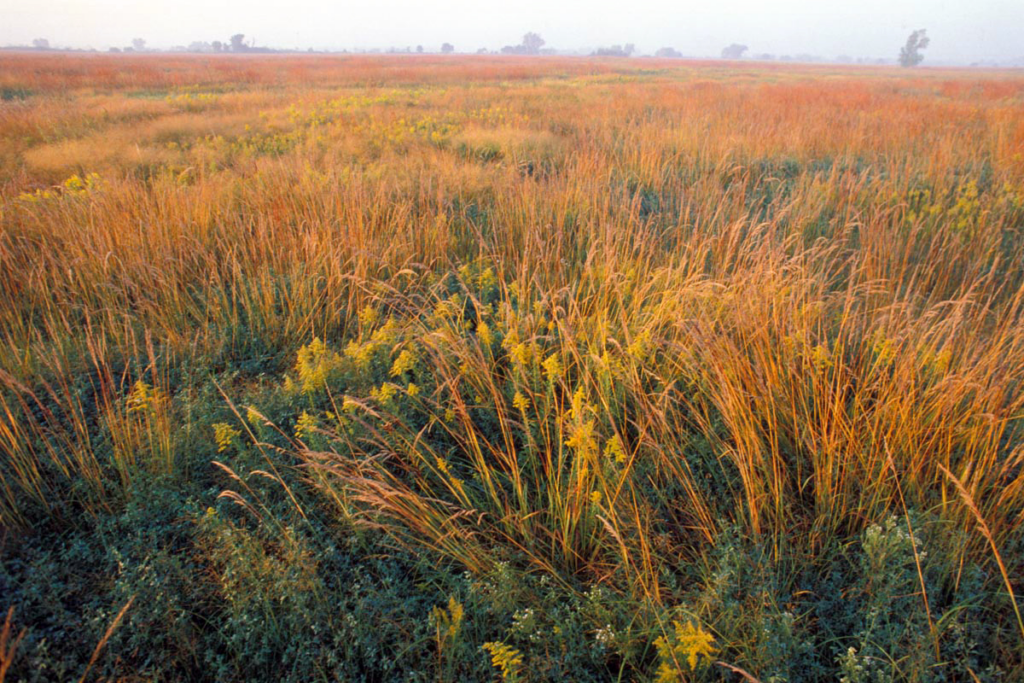
The Mixed-grass Prairie Ecoregion lies between the Tallgrass Prairie Ecoregion to the east and the Shortgrass Prairie Ecoregion to the west. As the name implies this is a transition zone where the tallgrass and shortgrass prairie merge, taking on characteristics of both. Its highly diverse flora and fauna include a mix of species found also in the tallgrass and shortgrass prairie. The region’s climate is semiarid with an annual precipitation ranging from 28 inches in the east to 20 inches in the west.
This region contains hundreds of miles of rivers and streams that drain eastward toward the Missouri River. With these rivers and streams there is also an abundance of wetlands, including playas, wet meadows, floodplain and Sandhill wetlands.
The Mixedgrass Prairie Ecoregion includes a variety of native plant communities. Tallgrass prairie species tend to dominate in the east along river floodplains, and shortgrass species dominate the western part of the ecoregion. Prairie hilltops have many species of drought-resistant short-grass prairie plants such as blue grama and buffalo grass. Forbs also are fairly abundant and include prairie-clovers, leadplant, prairie-coneflowers, and dotted blazingstar. The wet meadows and wet prairie along the river include a variety of plants such as woody sedge, spike rush, and prairie cordgrass.
More than 350 species of resident and migratory birds have been documented using the Mixed-grass Prairie Ecoregion. Common grassland birds include grasshopper sparrow, dickcissel, western meadowlark, field sparrow, and northern harrier. More than two dozen species of waterfowl regularly use the Rainwater Basin wetlands during migration. This includes one third of the continent’s northern pintails, 50% of the continent’s mallards, and over 90% of the mid-continent’s greater white-fronted geese. This region is also home to many species of mammals such as the white-tailed jackrabbit, eastern woodrat, striped skunk, American badger, and several species of bats. This area houses a diversity of fish species, several reptile and amphibians, and one of the world’s rarest insects: the Platte River Caddisfly.
The Mixed-grass Prairie Ecoregion offers a surplus of outdoor and nature-oriented recreational activities. This area is recognized worldwide for premiere wildlife viewing spectacles including the migration of more than half a million sandhill cranes on their way to breeding grounds in the early spring. There is also a strong tradition of hunting and fishing in this ecoregion. Most of the region’s larger cities have trails associated with parks that offer access to natural environments.
Sandhills
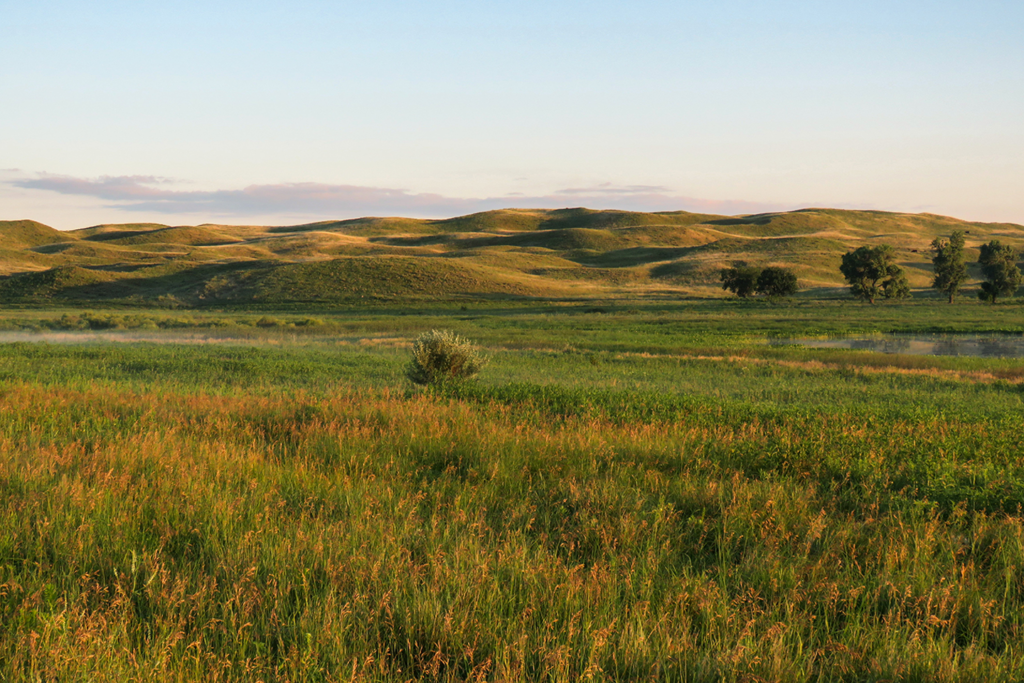
Covering 19,300 miles in north-central Nebraska the Sandhills Ecoregion is the largest stabilized dune system in the Western Hemisphere and one of the largest, intact native grasslands in North America. The Sandhills remain as one of the last large vestiges of the Great American Plains.
Geologically, the Sandhills are young. Several major episodes of dune formation have occurred over the past 13,000 years and several periods of drought-induced sand movement have occurred during the past 1,000 years. Scientists speculate that, at times in its history, the Sandhills were a sea of blowing sand, similar to today’s Sahara Desert. The Sandhills climate is semiarid with an annual amount of precipitation ranging from 23 inches in the east to less than 17 inches in the west.
Extensive aquifers up to 900 feet thick have formed below the dunes, mainly in sand and gravel deposits. The underground reservoir is part of the Ogallala aquifer and contains an estimated 700-800 million acre-feet of groundwater. This is nearly double the amount of water found in Lake Erie. Where the region’s high-water table intersects the ground surface in Sandhill valleys, nearly 2,000 shallow lakes and over a million acres of wetlands have formed.
The Sandhills contain a variety of native plant communities ranging from wetlands to dry upland prairie. Nearly 700 native plant species have been documented in the Sandhills including several at-risk species. The Sandhills prairie community consists of a mixture of sand-adapted grasses including sand bluestem, prairie sandreed, little bluestem, and hairy grama. Forbs could include stiff sunflower, bush morning glory, annual buckwheat, and Plains gayfeather. Freshwater marshes in the Sandhills have shallow standing water most of the year as well, a few marsh plants that can be found include common reed, hard-stem bulrush, duckweeds, and coontail.
More than 300 species of resident and migratory birds have been documented in the Sandhills. This region is a stronghold for sharp-tailed grouse and greater prairie-chicken and is considered an important breeding site for the world’s largest sandpiper, the long-billed curlew. Other waterbirds that are common breeders in the Sandhills include Wilson’s phalarope, American avocet, western grebe and black tern.
The Sandhills also is home to 55 species of mammals. Small mammals include the plains pocket gopher, masked shrew, and Ord’s Kangaroo Rat. This ecoregion also supports a few elk and relatively small numbers of pronghorn, particularly in the west. One of the rarest mammals of the Sandhills is the Bailey’s eastern woodrat.
Streams and lakes are home to nearly 75 species of fish, many common river generalists such as channel catfish, flathead chub, and river carpsucker. Twenty-seven species of amphibians and reptiles are found in the Sandhills, including one salamander, three toads, four frogs, six turtles, four lizards, and nine snakes. Insects are important to the ecology of the Sandhills; they serve several vital functions as pollinators, decomposers, and food for many other species of wildlife. Seventy species of scarab beetles have been documented in Thomas County alone.
The Nebraska Sandhills are ideally suited for nature-based recreation. Hunters and anglers have many species of big and upland game and the natural Sandhill lakes are highly regarded for their bluegill, northern pike, and largemouth bass fishing. There are also thousands of acres of public land in the Sandhills, including three National Wildlife refuges. These refuges are great for activities such as wildlife viewing, bird watching, hiking, horseback riding, and canoeing and kayaking.
Shortgrass prairie
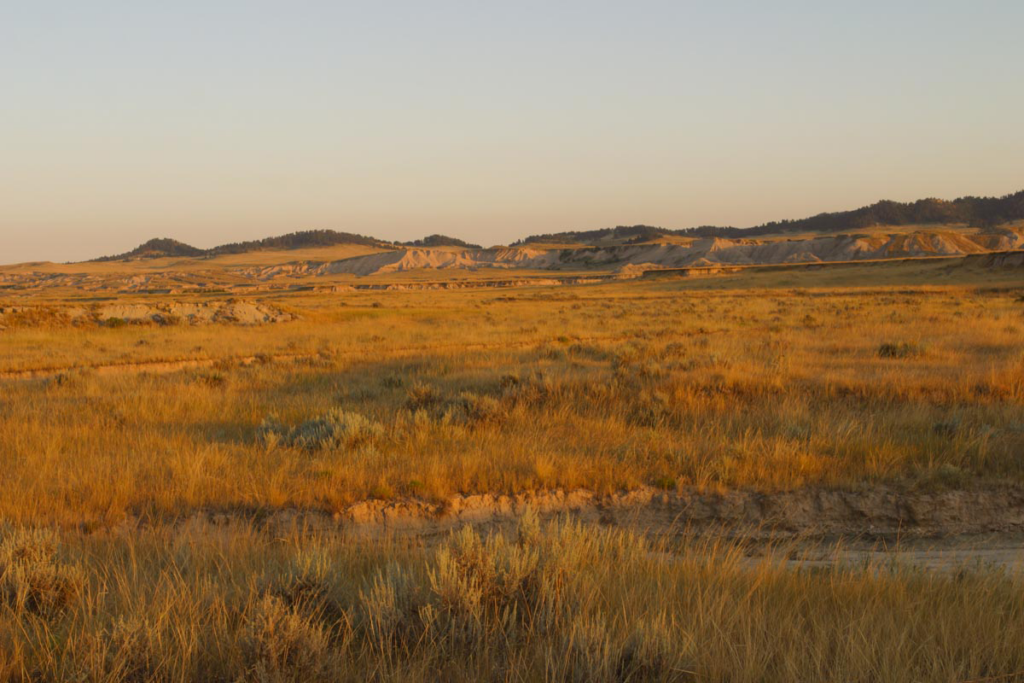
This ecoregion features diverse topography, including several areas of rocky escarpments, sandsage prairie, sand prairie, pine woodlands, badlands, and other vegetation types. Soils range from sands to clays with a greater variety of soil types than other ecoregions in the state. Annual precipitation ranges from 12-17 inches.
Short-grass prairies are dominated by grasses such as buffalo grass and blue grama. Common forbs in this prairie type include milk-vetches, scarlet gaura, cutleaf ironplant, prickly pear, and prairie-coneflower. The low precipitation in the Shortgrass Prairie Ecoregion, in conjunction with grazing, causes most short-grass vegetation to rarely exceed 10 inches in height.
Open canopies of tall cottonwoods and shorter peachleaf willows dominate riparian woodlands in many stream valleys of the ecoregion. Pine woodlands are dominated almost solely by Ponderosa pines, and the badlands are largely unvegetated but often have a sparse cover of low shrubs.
More than 300 species of resident and migratory birds have been recorded in the Shortgrass Prairie Ecoregion. Common species could include the western meadowlark, grasshopper sparrow and lark bunting. The region’s wetlands support many species of waterfowl including Canada goose, mallard, and northern pintails among many several species of shorebirds.
A variety of mammals are known to occur in this ecoregion as well. Ungulates such as both white-tailed and mule deer, as well as elk, pronghorn and bighorn sheep. Mountain lions also have been recorded in this area as being the largest natural predator among coyotes and bobcats.
The aquatic habitats of Nebraska’s Panhandle support numerous species of fish. The region’s lakes and reservoirs have been stocked with game fish such as walleye, largemouth bass, white bass and bluegill. River-associated species include channel catfish, shovelnose sturgeon, western silvery minnow, plains minnow and several species of darters.
Many species of reptiles and amphibians are known to occur in the Shortgrass Prairie Ecoregion as well. Amphibians such as boreal chorus frogs and the Woodhouse’s Toad. Reptiles include bullsnakes, prairie rattlesnakes, lesser earless lizards, great short-horned lizards, and ornate box turtles.
The Shortgrass Prairie Ecoregion also has a wealth of natural amenities. This region is a known destination for the natural history enthusiast, hunters, anglers, hikers, and the casual visitor interested in varied scenery. This ecoregion is home to Lake McConaughy, the largest reservoir in the state and a well-known destination for anglers, bird watchers, hunters, and campers. The Pine Ridge also offers a plethora of wildlife viewing opportunities, trout fishing, hiking trails, equestrian trails, rock hunting and wildflower viewing opportunities.


